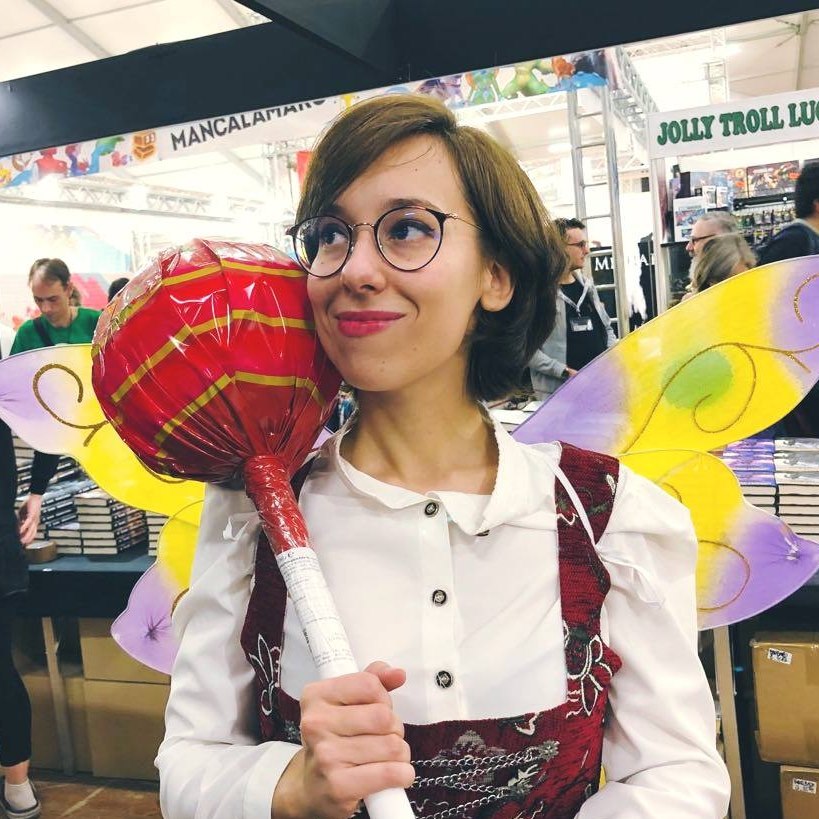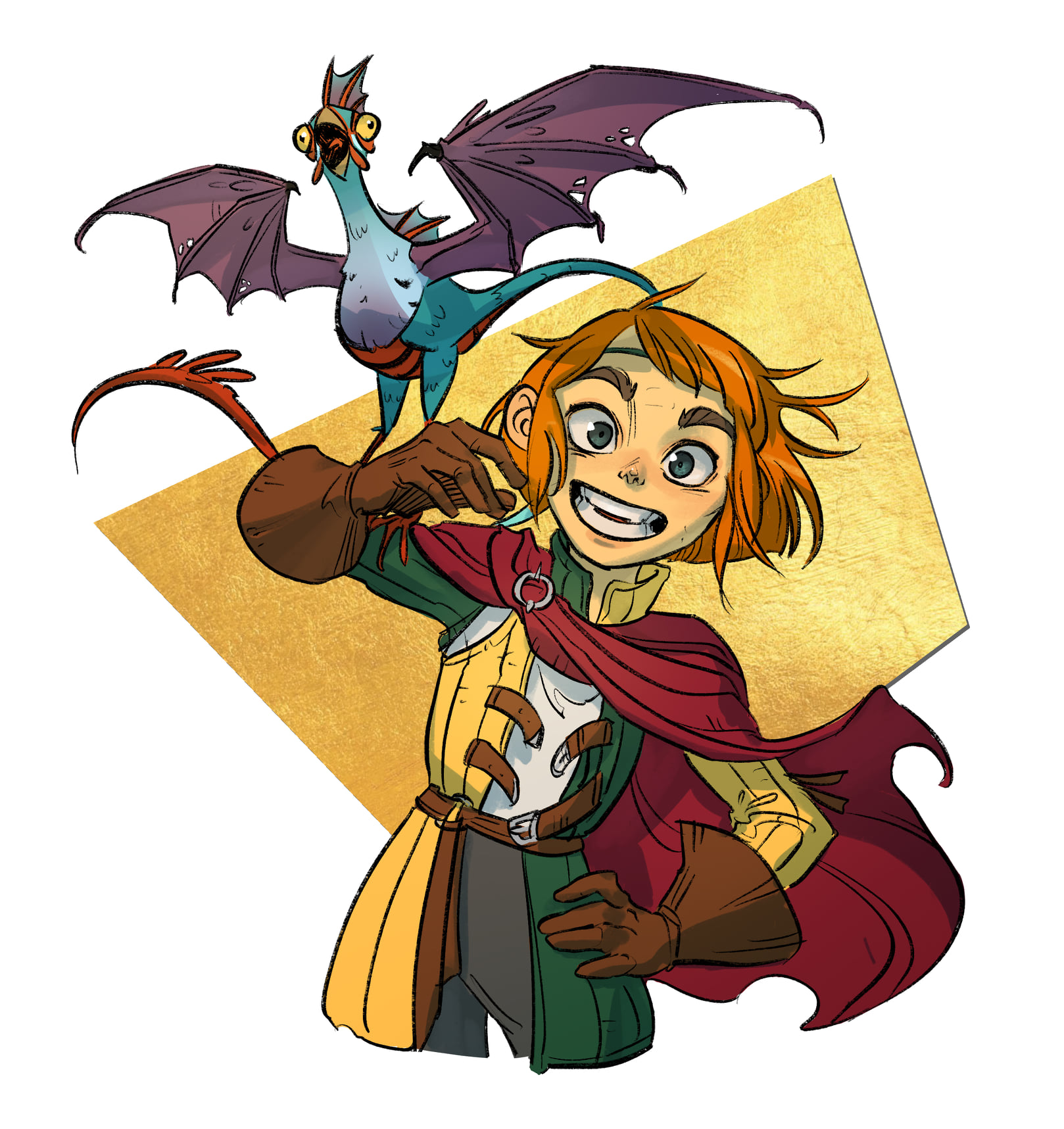
Still enchanted by the incredible art of Inferno: Dante’s Guide to Hell setting for D&D5e, we decided to do this interview with Daniela Giubellini, the main illustrator of this work.
The fact that the project is a source of pride for the whole world of the Italian RPG is also evident in the resounding success of the Kickstarter campaign.
But now enough preambles and let’s see what Daniela has to tell us!

When did you understand/decide that drawing would become your profession?
It was when I realized that I had no real chance of bringing dinosaurs back to life with the DNA contained in a prehistoric mosquito preserved in amber. At that point I opted for the second best option. Seriously, I’ve always wanted to do a creative job and I think I thought I’d pursue an artistic career around the age of twelve. At that time I had just started reading comics and wanted to be a colorist. So (after months and months of mouse coloring) I got my first graphics tablet.
As an artist, how did you start to draw for the world of role-playing games?
It was a strange coincidence: in high school, with my first group of nerdy friends, I discovered Sine Requie and fell in love with it.
Years later, while I was walking around a fair, I found at one of the stands Yugin Maffioli, my first real teacher of comics. I wasn’t there to bring a portfolio, I didn’t have any with me, I just wanted to show my old teacher a couple of pictures on my smartphone to let him know how much I improved. Yugin instead pushed me to show them to his publisher (a shady figure called Leonardo Moro Moretti) and he asked me to send him a portfolio… Which I obviously didn’t have because I had stopped trying to draw for work for several years. In a month I made one and sent it to him. Sine Requie’s Tome of the Creatures was my first real publication in the RPG world.
In Household sessions on YouTube you are also a player. How passionate are you about role-playing games? In addition to those you worked on, are there others that particularly impressed you?
I am mainly a World of Darkness player, I like investigation and mystery campaigns. I’ve also recently discovered Lovecraftesque, which comes in very handy when you don’t have the time to prepare a session. But in the last few years, I’ve been in a great Tales from the Loop campaign. Ah, and some friends and I also play Broken Compass very often (just to advertise something I worked on!).

Which artists are you inspired by?
Let’s see, it’s not an easy question because I’ve been inspired by different artists for almost thirty years now and it’s hard to keep track. Among contemporary painters I adore James Jean and Michael Hussar. While among the artists who work in the industry the one I prefer is Piotr Jablonkji (I almost always keep an image of his works in all my references folders) and Nathan Fawks of whom I have followed all the courses on schoolism. Another painter I love is Zdzislaw Beksinski.
How do you manage to create such compelling materials? We have been so fascinated by your works that we have created the term “Giubellinian” in our reviews!
I must say that at the moment part of the credit is that I have an excellent art director! I am a rather lazy designer: you would not see even a muscle of correct anatomy if the work were left entirely to me. I am very scrupulous on certain details and very imprecise on the fundamentals.
Do you use references? If so, how much weight do they have in creating the final results?
I would not be able to move a finger without references! The first part of my job is to spend about an hour accumulating all the images that I might need during processing. At certain times it was also a hindrance since when I felt more insecure, I tended to jump constantly from one image to another for fear of doing something wrong. This resulted in 40 windows open on the desktop and an infinite amount of time wasted to make sure that the seam next to that button from that period was exactly as it should be. Now, thank goodness, I keep the monitor off and I limit myself to one references at a time kept in order on the upper right side of the iPad, and until I have finished using it I do not move on to the following.
Do you also work traditionally? How much do traditional drawings help you in digital?
I love the traditional style, when I started I thought I would never use anything else. Now I think it’s been months that I haven’t touched a pencil and at least a year that I haven’t picked up a brush and I miss it a little. I use the pencil when I want to relax and in general the digital to work (now like everyone else, I think). Nothing will ever replace the traditional, but I’m a big advocate of digital media.
What would you like to work on? What are your aspirations?
I don’t know, at the moment I’m exactly where I want to be, I don’t aspire to work with big companies. My dream has always been to help something grow, not to become a piece of a machine that already worked very well without me. I believe that my hope is the same as that of my two companions: being able to continue living on what we love.
So far which product you’ve worked on have you enjoyed the most? Which one gave you the most trouble?
Parsifal! Our first graphic novel. Okay, I know it’s too early to tell because we’re still working on it, but I love every moment I spend on it. I like brushstrokes and beautiful shades, but my real recreation is to draw funny expressions and in Parsifal I have a lot of opportunities to do that.
The most complicated job? I didn’t think I would give this answer, but it was Broken Compass. That game was a considerable challenge, at the time it was largely beyond my abilities and my imagination. I didn’t know how to characterize the protagonists or how to make them move (for me they would all be in muddy white tank tops and ripped jeans) Rico guided me a lot in the realization and how to make that imaginary real and intriguing. It took a lot of study (especially on realism, on which I have never been so much good), but once I finished I realized that I had made a qualitative leap. Now it’s the job I’m most proud of and I like to keep those three nice little books on my desk.


What is it like to work on a reality so deeply rooted in the collective imagination as Dante’s Inferno?
Terrifying. I have to admit that the first time Rico and Simone presented their idea to me, I was not so much in love with the project. But then Rico told me the ideas behind it and showed me the aesthetic he wanted to use for this Inferno and I fell in love with it. I tried to make the images with the greatest respect and commitment possible and I think a very inspired work came out.

We thank Daniela Giubellini again for her availability for this interview and for the masterpieces that, thanks to her, we will be able to admire in the Inferno manual.
And a big good luck for the next works which, given the quality, we will certainly follow!



Trackbacks/Pingbacks